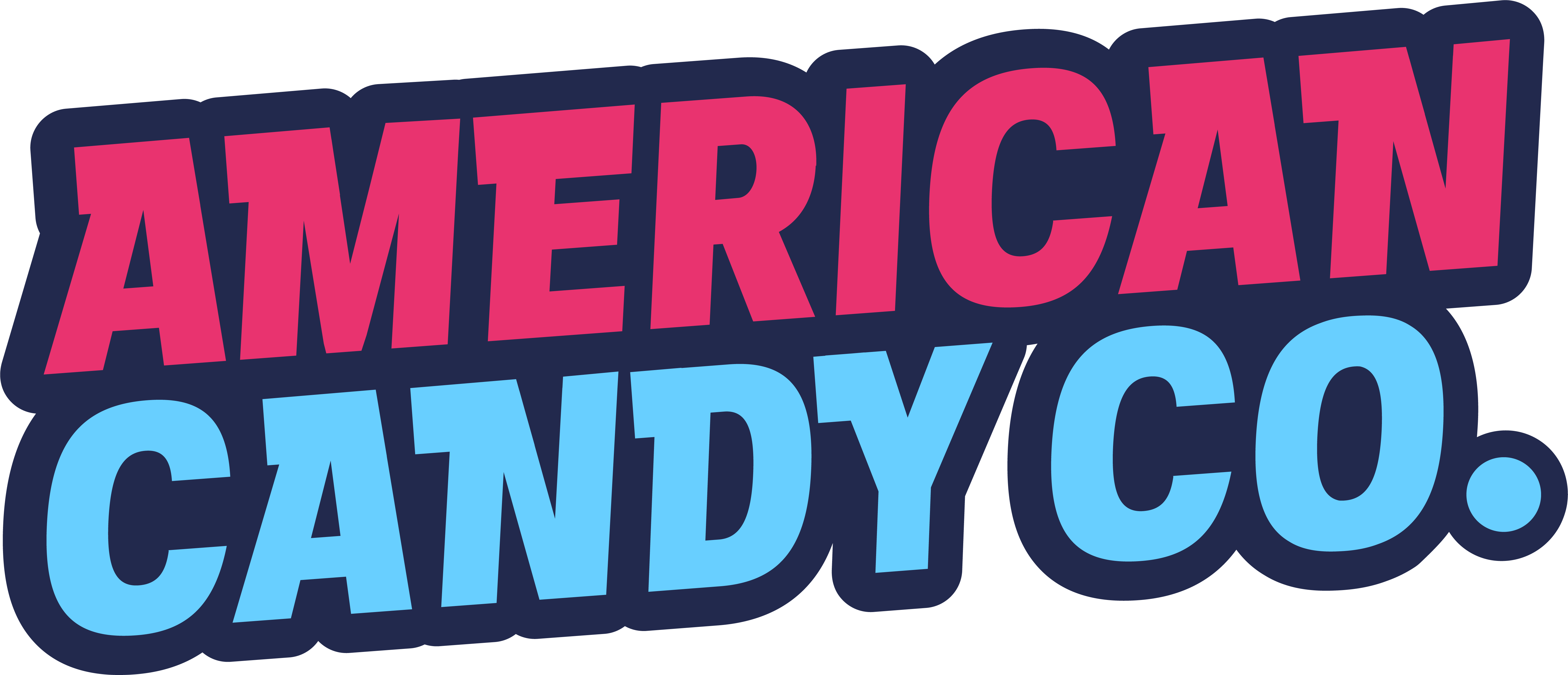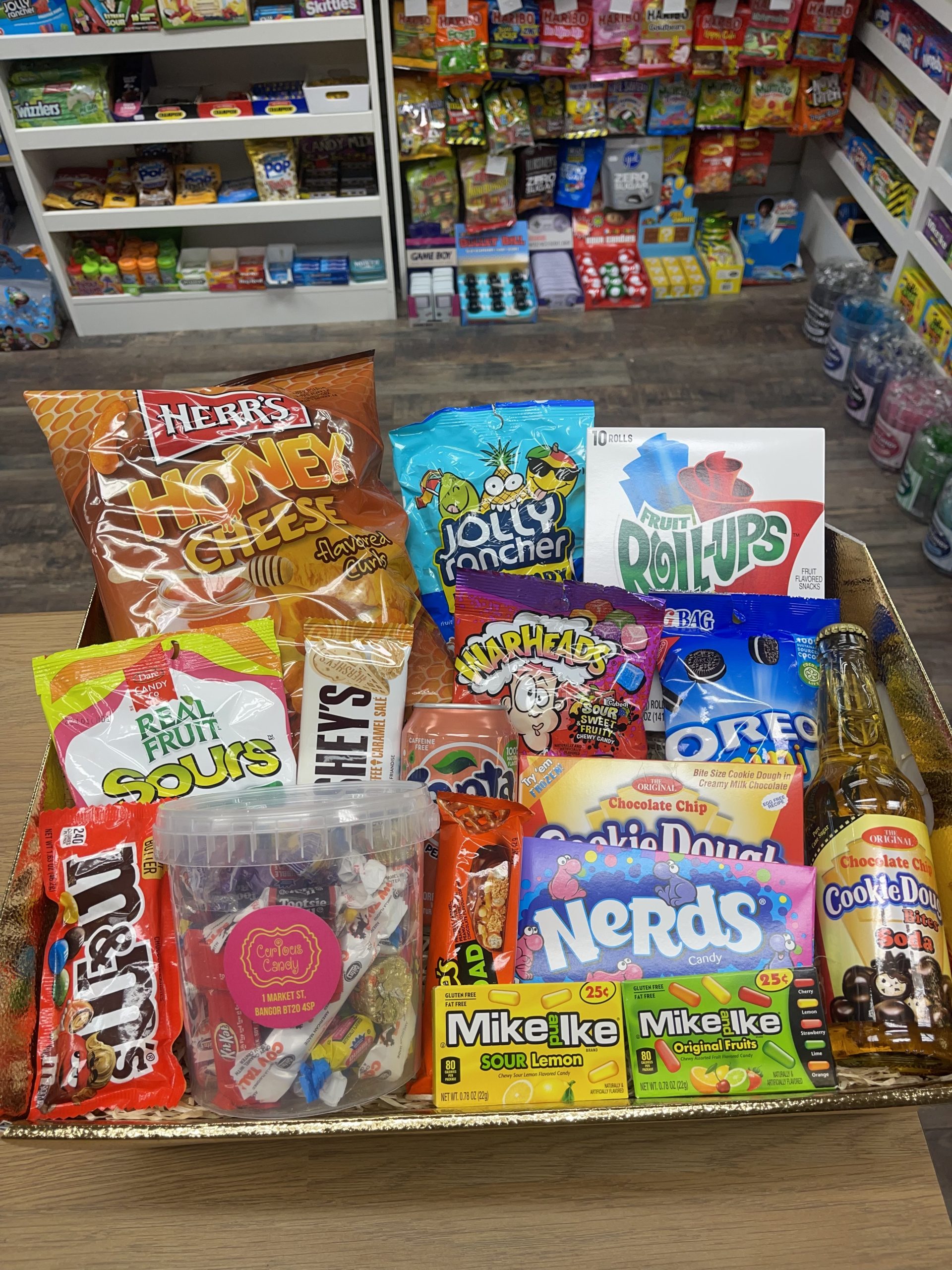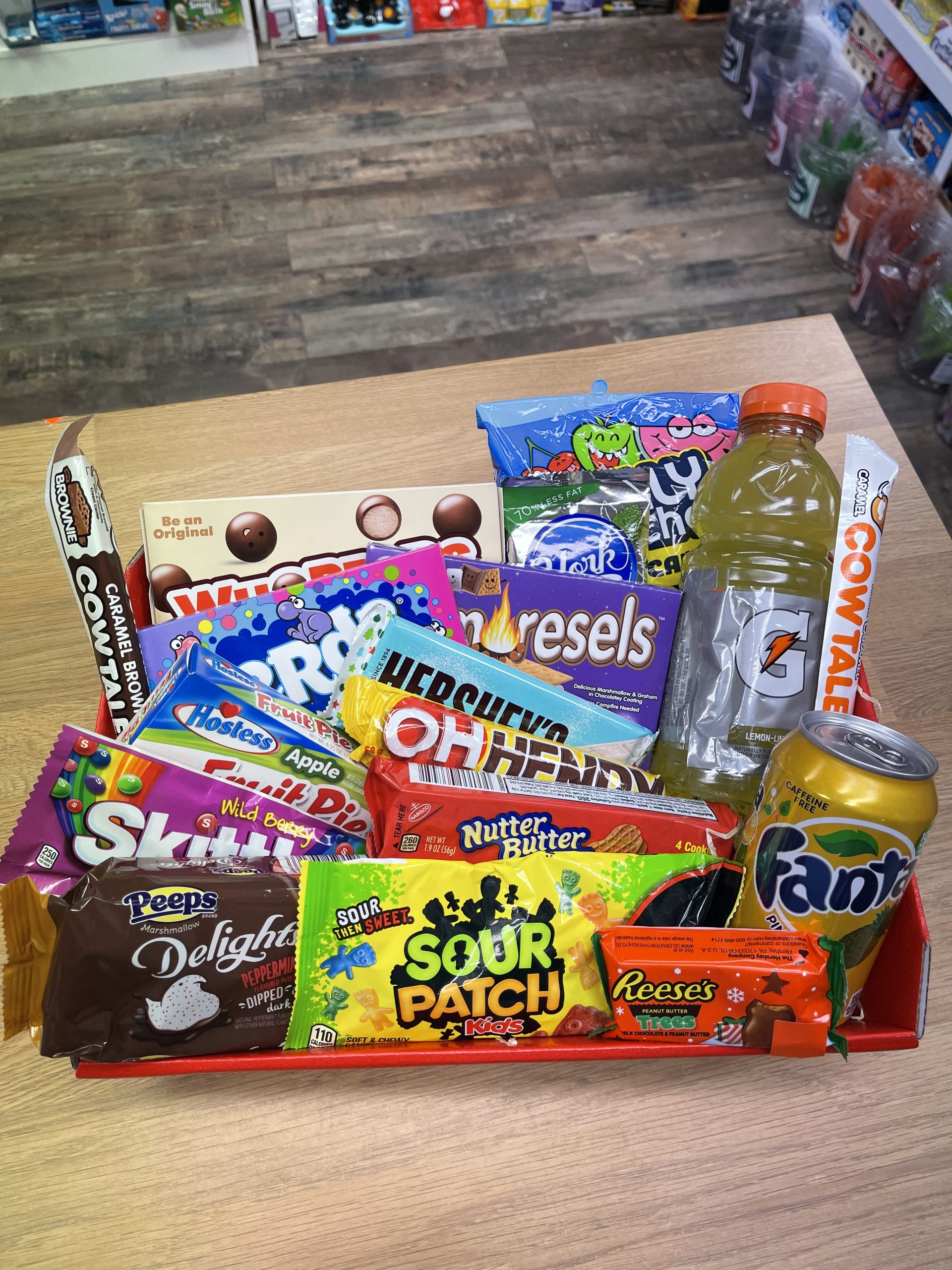Ever wondered why some American candies just don’t make it to Europe? Well, you’re not alone. The candy world is a wild ride, and there are tons of reasons why certain treats from the U.S. haven’t found their way across the Atlantic. From regulatory hurdles to cultural differences, there’s a lot going on behind the scenes. So, let’s dive into why some of your favorite American candies are missing from European shelves.
Picture this: you’re cruising through a European supermarket, and suddenly you realize—where’s the Nerds? What happened to Mike and Ike? It’s like they vanished into thin air. If you’re a candy enthusiast who loves that sweet, sugary goodness, you might be scratching your head wondering why these iconic treats haven’t made the leap to Europe. Let’s break it down for you.
Now, don’t get me wrong—Europe has its own amazing candies, like Haribo gummy bears or Swiss chocolate. But for some reason, certain American classics just haven’t caught on. Is it because of taste preferences? Ingredient differences? Or something else entirely? We’re here to uncover the truth, one sugary bite at a time.
- Where Is The Birth Certificate Number Located A Comprehensive Guide For Everyone
- Funny Sayings For A 30th Birthday Laughter Milestones And Quirky Wishes
Table of Contents
- Why American Candy Isn't in Europe
- Regulatory Barriers: The Hidden Culprit
- Cultural Differences: Taste Matters
- Logistical Challenges: Shipping and Storage
- Market Demand: What Europeans Want
- Top American Candies Missing in Europe
- Why Importing American Candy to Europe is Hard
- Health Regulations: Sugar Wars
- Business Strategy: Marketing to Europeans
- Conclusion: The Sweet Future
Why American Candy Isn't in Europe
Let’s get real for a sec. American candy is iconic. From the nostalgic charm of Reese’s Peanut Butter Cups to the jaw-dropping sweetness of Pixy Stix, these treats have a special place in our hearts. But when you step foot in Europe, it’s a completely different candy landscape. So, why is that?
The reasons are as varied as the candies themselves. First off, there are strict regulations in Europe regarding food additives, preservatives, and sugar content. Some American candies just don’t meet the European Union’s high standards. Plus, there’s the whole cultural thing. Europeans have their own candy preferences, which might not align with what Americans love.
Then there’s the business side of things. Shipping candy across the ocean isn’t cheap, and companies need to weigh the costs against potential profits. If they don’t think there’s enough demand, they won’t bother. It’s all about supply and demand, my friend.
- Creative Esthetician Names Ideas Stand Out In The Beauty Industry
- Witty Messages For Him Spice Up Your Conversations With Smart And Funny Texts
Regulatory Barriers: The Hidden Culprit
Okay, let’s talk about the elephant in the room: regulations. The European Union has some of the strictest food safety laws in the world. And guess what? A lot of American candies don’t pass the test. Ingredients like artificial colors, flavors, and certain preservatives are banned in Europe. So, if a candy contains any of these, it’s basically off-limits.
For example, Red Dye 40, a common food coloring in the U.S., is frowned upon in Europe. Same goes for BHA and BHT, which are used as preservatives in some candies. Companies would have to reformulate their recipes to meet EU standards, and that’s a whole lot of work—and expense.
Specific Regulations That Block American Candies
- Artificial colors like Yellow 5 and Yellow 6 are banned in Europe.
- Preservatives such as BHA and BHT are restricted.
- Sugar content is heavily monitored, with some countries even imposing sugar taxes.
These regulations aren’t just about health—they’re also about protecting local industries. By keeping certain American candies out, the EU supports its own candy makers, who often use natural ingredients and traditional methods.
Cultural Differences: Taste Matters
Let’s be honest—taste is subjective. What Americans love might not sit well with European palates. For instance, Americans tend to go for sweeter, more intense flavors, while Europeans prefer something a little more subtle. Think about it: Haribo gummy bears are chewy and fruity, whereas American gummies are often super sweet and sticky.
Plus, there’s the whole nostalgia factor. Europeans grew up with their own candy icons, like KitKat and Maltesers. They might not feel the same connection to American candies like Twizzlers or Jolly Ranchers. It’s like trying to sell peanut butter in a country where almond butter is king—it just doesn’t resonate the same way.
American vs. European Taste Preferences
- Americans love super sweet, intense flavors.
- Europeans prefer fruity, subtle flavors.
- Americans are fans of chewy, sticky textures.
- Europeans lean toward crispy, crunchy textures.
It’s not just about the taste—it’s about the experience. Europeans might find American candies too overwhelming, while Americans might think European candies are too mild. It’s all about finding the right balance.
Logistical Challenges: Shipping and Storage
Shipping candy from the U.S. to Europe isn’t as simple as it sounds. There are tons of logistical challenges to consider, like transportation costs, storage requirements, and shelf life. Candy that’s perfectly fine in the U.S. might not hold up well during a long journey across the ocean.
For example, chocolate candies like Hershey’s bars can melt in transit if they’re not properly refrigerated. And chewy candies like Starburst might get sticky and gross if they’re exposed to heat and humidity. Companies have to invest in special packaging and shipping methods to ensure their products arrive in good condition—and that’s expensive.
The Cost of Importing American Candy
- Shipping costs can add up quickly, especially for perishable items.
- Special packaging is required to protect candies during transit.
- Customs fees and tariffs can further increase costs.
It’s not just about getting the candy there—it’s about getting it there in a way that’s profitable. If the costs outweigh the benefits, companies won’t bother. It’s a tough call, but one that has to be made.
Market Demand: What Europeans Want
At the end of the day, it all comes down to demand. If Europeans aren’t clamoring for American candies, companies aren’t going to waste their time and money trying to bring them over. And right now, the demand just isn’t there—or at least not enough to justify the effort.
That’s not to say there aren’t any fans of American candy in Europe. There are definitely pockets of enthusiasts who seek out these treats, but they’re not enough to create a significant market. Companies need to see a clear return on investment before they’ll take the plunge.
How to Create Demand for American Candy in Europe
- Introduce American candies at events and festivals.
- Collaborate with influencers to promote these treats.
- Offer limited-edition releases to generate buzz.
Creating demand is all about marketing and exposure. If companies can get their candies in front of the right people, they might be able to spark interest and build a loyal fanbase. But it’s not an easy task.
Top American Candies Missing in Europe
So, which American candies are conspicuously absent from European shelves? Here’s a list of some of the most notable ones:
- Nerds: Those tiny, crunchy candies are a childhood favorite in the U.S., but they’re nowhere to be found in Europe.
- Mike and Ike: Another chewy candy that’s beloved by Americans but rarely seen in Europe.
- Reese’s Pieces: While Reese’s Peanut Butter Cups are available in Europe, the Pieces version is much harder to find.
- Twizzlers: These licorice-flavored candies are a staple in the U.S., but they’re not as popular in Europe.
- Charms Blow Pops: The combination of a lollipop and bubble gum is a classic American treat, but it’s missing from European stores.
These candies might not be available in Europe, but that doesn’t mean they’re not loved by Americans. They just haven’t made the leap across the pond—yet.
Why Importing American Candy to Europe is Hard
Importing American candy to Europe is harder than it looks. There are so many factors to consider, from regulations to logistics to market demand. It’s not just a matter of slapping a label on a candy bar and sending it off. Companies have to navigate a complex web of rules and requirements to make it happen.
And even if they do manage to clear all the hurdles, there’s no guarantee that the candy will be a hit. Europeans might not take to it, or the costs might be too high for consumers. It’s a risky business, and not every company is willing to take that risk.
Overcoming Import Challenges
- Partner with local distributors to navigate regulations.
- Invest in marketing campaigns to create demand.
- Focus on niche markets where American candy is already popular.
Companies that want to succeed in Europe need to be strategic. They can’t just assume that their products will automatically appeal to European consumers. It’s all about understanding the market and tailoring their approach accordingly.
Health Regulations: Sugar Wars
Health regulations are a big deal in Europe, especially when it comes to sugar. Many countries have implemented sugar taxes to discourage excessive consumption of sugary foods. This has led to a shift toward healthier snacks and reduced-sugar options. American candies, which are often packed with sugar, don’t always fit into this new paradigm.
Some companies have responded by reformulating their recipes to meet European health standards. For example, Hershey’s has introduced a line of reduced-sugar chocolates in certain markets. But not all companies are willing or able to make these changes, which limits their ability to enter the European market.
Sugar and Health: The European Perspective
- Sugar taxes are becoming more common in Europe.
- Consumers are increasingly health-conscious.
- Companies are under pressure to offer healthier options.
It’s not just about regulations—it’s about consumer preferences. Europeans are more likely to choose snacks that are perceived as healthy or natural. American candies, with their high sugar content and artificial ingredients, don’t always fit the bill.
Business Strategy: Marketing to Europeans
For American candy companies to succeed in Europe, they need to rethink their business strategy. It’s not enough to just slap a label on a candy bar and hope for the best. They need to understand the European market and tailor their approach to meet local needs and preferences.
This might mean reformulating recipes to meet health standards, partnering with local distributors to navigate regulations, or investing in marketing campaigns to create demand. It’s a lot of work, but it can pay off in the long run if done correctly.
Key Strategies for Success
- Reformulate recipes to meet European health standards.
- Partner with local distributors to navigate regulations.
- Invest in marketing campaigns to create demand.
Companies that are willing to adapt and innovate have a better chance of succeeding in the European market. It’s all about being flexible and responsive to local needs and preferences.
Conclusion: The Sweet Future
So, there you have it—the reasons why some American candies aren’t available in Europe. From regulatory hurdles to cultural differences, there are plenty of factors at play. But that doesn’t mean it’s impossible. With the right strategy and a bit of creativity, American candy companies can find success in Europe



Detail Author:
- Name : Dr. Sylvan Schmitt III
- Username : yessenia87
- Email : clemens.conn@funk.com
- Birthdate : 1994-03-29
- Address : 17564 Wellington Squares Hiltontown, SC 99768-9092
- Phone : (606) 949-6744
- Company : Schamberger and Sons
- Job : Barber
- Bio : Molestiae unde laboriosam quis odit dolores voluptas. Neque et quis reiciendis cupiditate eligendi dolores numquam. Officia sed rem reiciendis ut quia a.
Socials
facebook:
- url : https://facebook.com/celia_real
- username : celia_real
- bio : Molestiae iste eaque aut quas aut. Ut enim corrupti aut non at.
- followers : 2168
- following : 2245
twitter:
- url : https://twitter.com/celia620
- username : celia620
- bio : Accusamus quia illo est aspernatur soluta repellat. Illum sunt laboriosam soluta ipsum id nam repellendus.
- followers : 4347
- following : 2583
